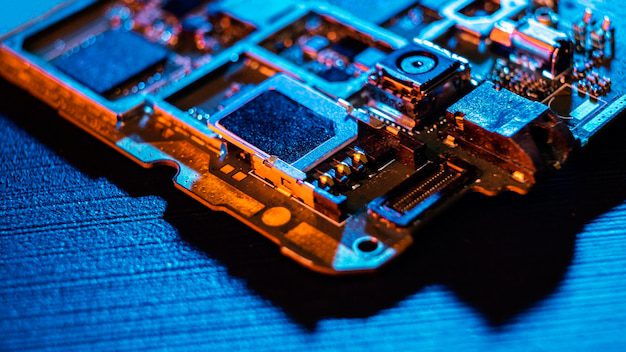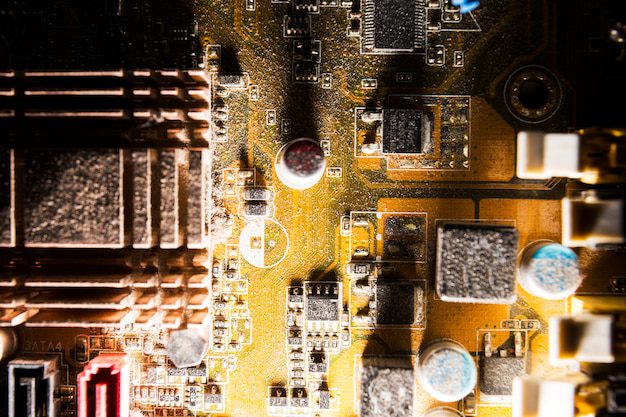How is electronic waste recycled?
Electronic waste, also known as e-waste, is a growing concern in today’s digital age. As technology advances at a rapid pace, more and more electronic devices are being discarded, leading to a significant environmental impact. Recycling e-waste is crucial to minimize the harm caused by improper disposal and to ensure that valuable resources are recovered and reused.
The importance of recycling electronic waste
Properly recycling electronic waste helps reduce pollution, conserve natural resources, and prevent health risks associated with hazardous components found in these devices. Electronics contain various materials such as plastics, metals, and toxic substances like lead, mercury, and cadmium. When disposed of incorrectly, these materials can leach into the soil and water, contaminating the environment and posing a threat to human health.
By recycling e-waste, valuable resources like gold, silver, copper, and rare earth metals can be recovered. This reduces the need for mining, which is an energy-intensive process that contributes to habitat destruction and carbon emissions. Furthermore, recycling electronics reduces the demand for raw materials, conserving natural resources and reducing the energy required for manufacturing new products.
The process of recycling electronic waste
The recycling of electronic waste involves several steps to ensure proper disposal and resource recovery. Here is a brief overview of the typical recycling process:
- Collection: E-waste is collected from households, businesses, and recycling centers. This can be done through specialized collection programs or drop-off points.
- Sorting: The collected e-waste is transported to recycling facilities where it undergoes a sorting process. Different types of electronic devices are separated to streamline the recycling process.
- Dismantling: Electronic devices are disassembled into smaller components. This step involves removing batteries, separating circuit boards, and segregating different materials.
- Resource recovery: After dismantling, the various components are processed to recover valuable materials. For example, precious metals can be extracted from circuit boards using specialized techniques.
- Safe disposal: Any hazardous materials or components that cannot be recycled are disposed of in an environmentally responsible manner, following strict regulations.
- Recycled material processing: The recovered materials are further processed and prepared for reuse in the manufacturing of new electronic products or other industries.
Challenges in electronic waste recycling
Recycling electronic waste is not without its challenges. One significant issue is the presence of complex mixtures of materials in electronic devices, which require sophisticated separation techniques. Additionally, some electronics contain hazardous substances that need careful handling to avoid environmental contamination during the recycling process.
Another challenge is the lack of awareness and participation in e-waste recycling programs. Many people are still unaware of the importance of recycling their old electronic devices or are unsure how to do so properly. Increasing public education and accessible collection points can help address these issues and encourage more responsible disposal of e-waste.
“Recycling electronic waste is crucial for minimizing environmental harm and conserving valuable resources.”
What can be made from electronic waste?
Electronic waste, commonly known as e-waste, refers to discarded electrical or electronic devices. Instead of letting these devices clutter up landfills, there are many useful and creative ways to repurpose them. Let’s explore some of the things that can be made from electronic waste:
1. Upcycled Furniture:
Old computer towers, circuit boards, and keyboards can be transformed into unique pieces of furniture. From chairs made out of circuit boards to tables constructed with old computer components, upcycled furniture not only reduces waste but also adds a touch of creativity to your home.
2. Art and Decor:
E-waste can be turned into stunning works of art and decorative items. Artists incorporate elements such as old CDs, wires, and even broken screens to create eye-catching sculptures, wall hangings, and mosaics. These pieces not only showcase innovation but also highlight the environmental impact of technology.
3. Jewelry and Accessories:
Discarded computer chips, circuit boards, and headphones can be repurposed into stylish jewelry and accessories. With a little creativity, you can make earrings, pendants, cufflinks, and even keychains using these materials. This not only gives a second life to e-waste but also adds a unique touch to your fashion choices.
4. Educational Tools:
E-waste can serve as an excellent resource for educational purposes. Schools and organizations can repurpose old computers, laptops, and tablets to create computer labs or learning centers for students in need. This promotes digital literacy while reducing electronic waste in landfills.
5. DIY Projects:
There are countless do-it-yourself projects that can be accomplished using electronic waste. From building robots and remote-controlled vehicles to creating a digital photo frame or a gaming console, e-waste provides ample opportunities for innovation and learning.
6. Recycling and Repurposing Programs:
Many companies and organizations have established recycling and repurposing programs for electronic waste. These initiatives ensure proper disposal of hazardous materials while extracting valuable resources from old devices. Participating in these programs not only prevents environmental damage but also contributes to the circular economy.
“Repurposing electronic waste is not only environmentally responsible but also allows us to tap into our creativity and innovation.”
By finding new uses for electronic waste, we can reduce the strain on our planet’s resources and minimize the environmental impact of technology. So, next time you have old electronic devices lying around, think about the potential they hold and consider repurposing them in one of the creative ways mentioned above.
How much e-waste is actually recycled?
E-waste, also known as electronic waste, refers to any discarded electronic devices or equipment. With the constant advancement of technology and our reliance on electronic gadgets, the amount of e-waste generated each year has been steadily increasing. However, the recycling of this e-waste still remains a major challenge.
The scale of the problem
In the UK alone, approximately 1.5 million tonnes of electronic waste is generated every year. Unfortunately, only a fraction of this e-waste is properly recycled. According to recent statistics, around 35% of e-waste in the UK is collected for recycling, but only a small portion of that actually gets recycled.
The challenges of e-waste recycling
There are several reasons why e-waste recycling is not as efficient as it should be. Firstly, many people are simply unaware of the importance of recycling their electronic devices. Instead, they choose to dispose of them in regular waste bins, which ultimately ends up in landfill sites.
Secondly, the complex nature of electronic devices makes recycling a challenging process. Different components within these devices require specialized recycling techniques, and some hazardous materials need to be handled carefully to prevent environmental damage.
The impact of unrecycled e-waste
When e-waste is not properly recycled, it poses significant risks to both human health and the environment. Many electronic devices contain toxic substances such as lead, mercury, and cadmium, which can leach into soil and water sources if not disposed of properly. This can have detrimental effects on ecosystems and can even enter the food chain.
Quote: “It is estimated that e-waste contributes to approximately 70% of the overall toxic waste found in landfills.” – Greenpeace
The potential for increased recycling
While the current recycling rates for e-waste are low, there is potential for improvement. Increasing awareness about the importance of recycling electronic devices is crucial. Governments, manufacturers, and environmental organizations need to work together to educate the public and provide convenient recycling options.
List:
- Promoting e-waste recycling through awareness campaigns
- Making recycling facilities easily accessible
- Incentivizing recycling through buy-back programs or tax benefits
- Implementing stricter regulations on e-waste disposal
How is e-waste recycled in the UK?
Electronic waste, or e-waste, is a growing concern globally. In the UK, efforts are being made to responsibly recycle and dispose of electronic devices to minimize their negative impact on the environment. Recycling e-waste helps conserve resources, reduce pollution, and prevent hazardous materials from entering landfills. Here’s how e-waste is recycled in the UK:
1. Collection and Sorting
E-waste collection points are set up across the country, where individuals and businesses can drop off their old electronic devices. These collection points may include recycling centers, designated bins, or even specialized collection events. After collection, the e-waste is sorted based on material type and condition.
2. Disassembly
Once sorted, the e-waste undergoes disassembly. Skilled technicians carefully remove any reusable components from the devices. These components can include circuit boards, memory chips, screens, and more. Reusable parts are then tested and refurbished for resale or repurposing.
3. Recycling Process
The remaining non-reusable parts and materials are sent for recycling. This typically involves shredding the e-waste to break it down into smaller pieces. Valuable metals such as copper, gold, and silver are extracted using various techniques, including crushing, sieving, and magnetic separation.
Did you know? According to a report by the United Nations University, the UK is the second-largest producer of e-waste in the world.
4. Hazardous Material Treatment
E-waste often contains hazardous substances such as lead, mercury, and flame retardants. These materials require careful handling and treatment to avoid environmental contamination. Specialized facilities in the UK are equipped to safely dispose of or neutralize these hazardous materials.
5. Responsible Recycling Certifications
To ensure responsible recycling practices, many e-waste recycling companies in the UK adhere to various certifications and standards. These certifications include WEEE (Waste Electrical and Electronic Equipment) compliance and ISO 14001, which focuses on environmental management systems.
Fact: The UK government estimates that only around 45% of e-waste is currently recycled, highlighting the need for increased awareness and participation in e-waste recycling initiatives.
6. Reuse and Extended Lifespan
One of the key goals of e-waste recycling is to extend the lifespan of electronic devices. Refurbished components and devices that meet safety and quality standards can be reintroduced into the market, reducing the demand for new electronics and saving valuable resources.
7. Environmental Awareness and Education
Efforts are being made to raise awareness among the public and businesses about the importance of responsible e-waste recycling. Various campaigns and educational programs aim to inform individuals about the negative impacts of improper disposal and encourage them to choose recycling options.
8. Producer Responsibility Schemes
In the UK, producer responsibility schemes require manufacturers and importers of electrical and electronic equipment to take responsibility for the proper disposal and recycling of their products. This ensures that companies are actively involved in reducing the environmental impact of the products they produce or import.
9. Government Regulations and Policies
The UK government has introduced regulations and policies to tackle e-waste. The Waste Electrical and Electronic Equipment (WEEE) Regulations lay down guidelines for the proper handling, collection, and recycling of e-waste. The UK is also a signatory to international agreements that aim to address e-waste on a global scale.
10. Encouraging Circular Economy
Efforts are being made to transition towards a circular economy, where electronic devices and their components are designed for easy repair, reuse, and recycling. This approach encourages manufacturers to prioritize sustainability throughout the lifecycle of their products, reducing the environmental impact of e-waste.
In conclusion, e-waste recycling in the UK involves collection, sorting, disassembly, recycling, hazardous material treatment, and responsible certifications. By adopting these practices and promoting a circular economy, the UK aims to reduce the environmental footprint of electronic waste and create a more sustainable future.
Conclusion
Properly recycling e-waste is essential for mitigating its harmful impact on the environment and improving sustainability. By increasing awareness and improving recycling infrastructure, we can significantly reduce the amount of e-waste that ends up in landfills and ensure a more sustainable future.



